Some things are surreal – like being caught in the maelstrom of a global pandemic. Anxiety is high, the future is unknown. It’s unbelievable, monumental and challenging. If you are like us and need an escape, come along on a trip to a tiny island in the middle of the Pacific Ocean that has weathered many storms. Join us as we travel to Easter Island.
Disclosure: This post contains affiliate links. If you buy something from one of our affiliates, we receive a small commission at no extra charge to you. Thanks for helping to keep our blog up and running!
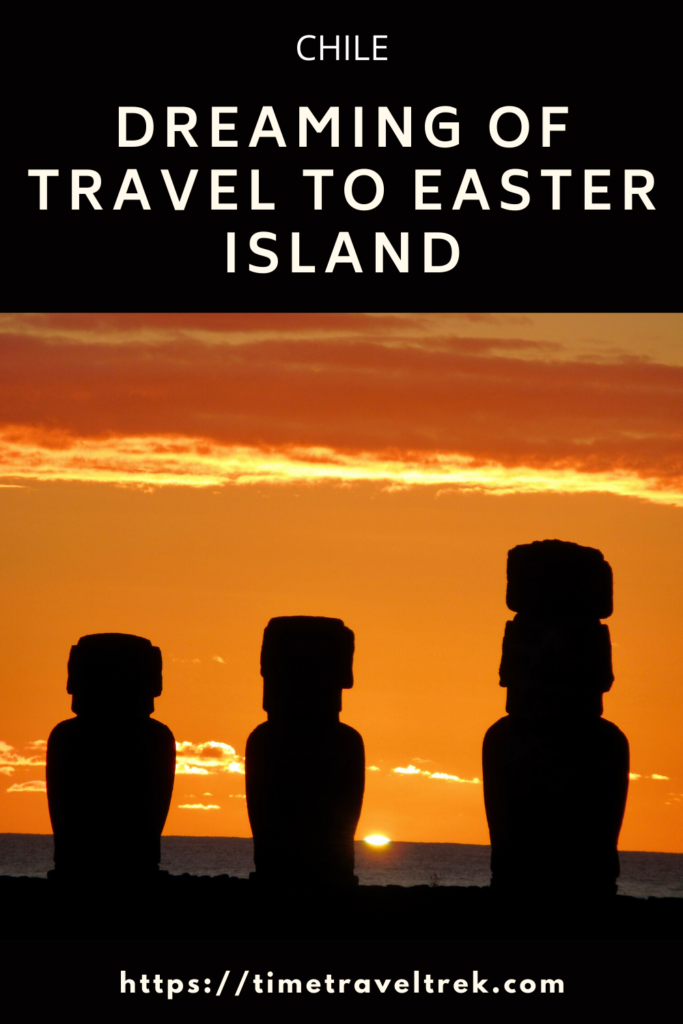
Table of Contents
Travel to Easter Island
Certainly, this isn’t a trip many people can afford to do at the drop of a hat. Travel to Easter Island involves a significant amount of planning and budgeting. For instance, it took us a whopping 30 years to finally say “we’re going to Easter Island.”
“What and where is Easter Island?” a friend asks. I laugh and dive into a description.
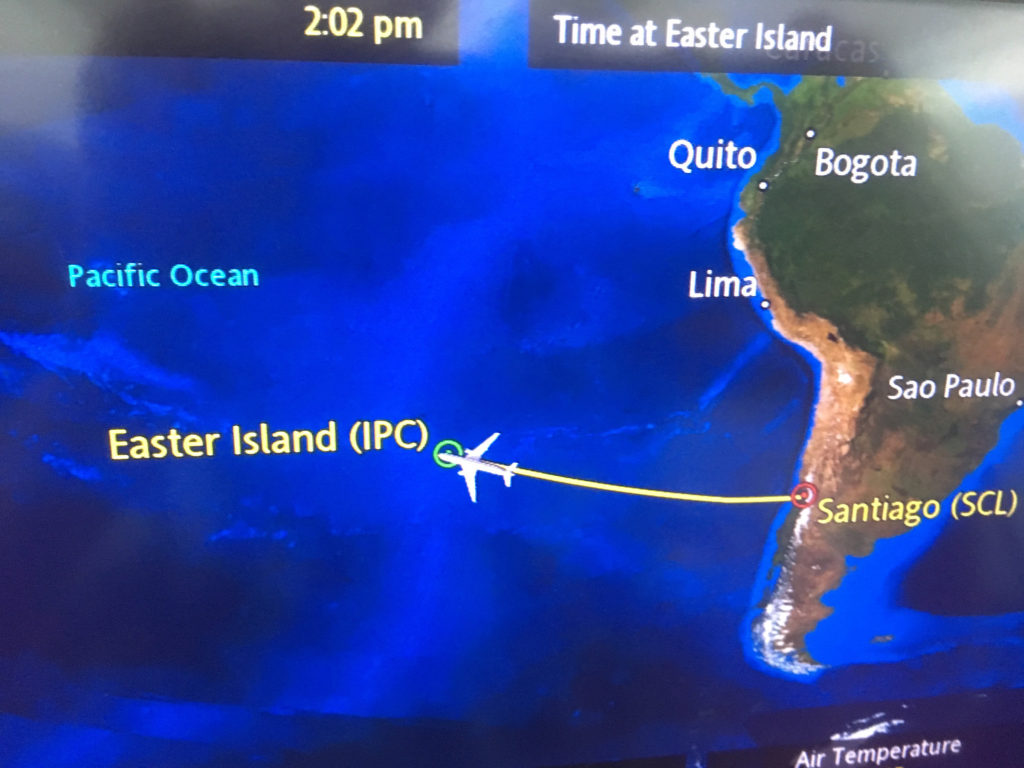
What’s in a Name?
Looking at a photo of a stoic stone face standing 16 feet (5 m) high? It is undoubtedly one of the iconic, volcanic stone statues on Easter Island. Dutch explorer Jacob Roggeveen landed on the island on Easter Sunday – April 5th– 1722. Easter Island is Rapa Nui to native islanders and Isla de Pascua to many Chileans. In other words, one place, a blend of cultures and many names.
This remote and somewhat mysterious destination was always on my list of “one day” dream travel destinations. Why? I’m not exactly sure. Maybe it was the mystery. Perhaps it was the mythology. Probably it was the cachet of being so remote.
On Our Way
Finally one February, our plane crosses some 2,300 miles (3,700 km) from mainland Chile to Rapa Nui. I keep thinking this can’t be real, but here we are disembarking at the airport in Hanga Roa. Travelling with only carryon means we are among the first out the doors of the terminal. Leis are draped around our necks. Standing in the warm sun, we wait patiently for the remainder of our vanload staying at Camping Mihinoa to collect their luggage.
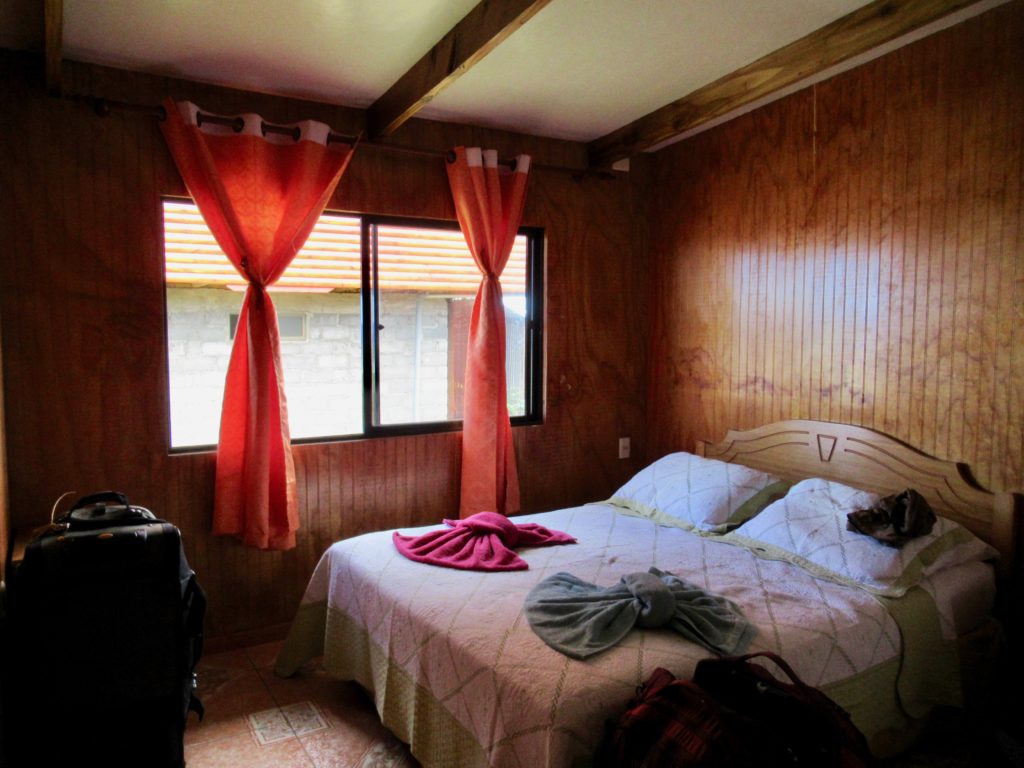
Dropping our bags in the hostel, we follow the wooden boardwalk through the grassy field camping area and through the little wooden gate to a bench across the narrow road. Without a doubt, we have arrived.
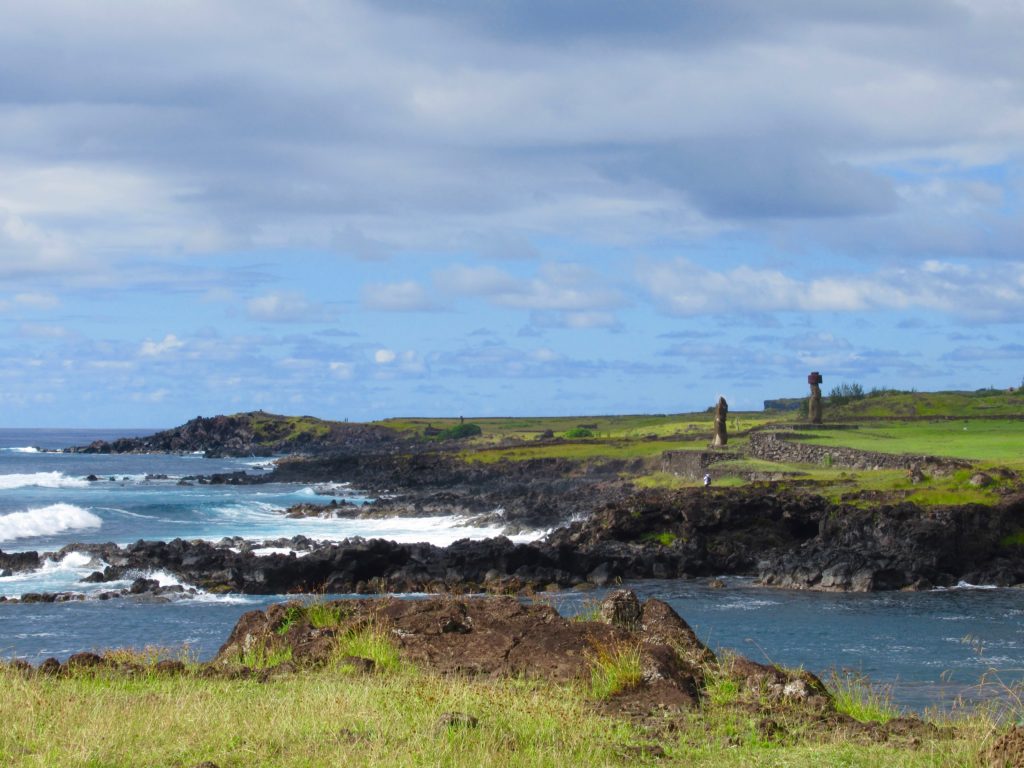
The ocean greets us as we sit, soaking up the sights of endless blue water, black lava stone and frothy white waves. Finally, we tear our gaze away and take out the map and guidebook to start making plans.
Keys to the Past
There is a lot more to Easter Island than just rock statues, but these silent sentinels are keys to the island’s human history. We book a one-day Megaliths tour with Easter Island Travel to help give us an overview.
Somewhere between 900 to 1200 hundred years ago, Polynesian explorers land on the sandy shores of Anakena beach. The first leader was Hotu Matu’a. He arrived on Rapa Nui with two ships. According to legend, one ship is led by him and the other by his sister, Avareipua. Pictographs around the island show the double canoes like the ones they travelled in.
Mythical Moai
As the population grew over time, the Rapa Nui culture became known for building huge ceremonial centers. Carved rock statues honour kings and other high-ranking individuals in society. The Easter Island statues, or moai, date back from 1400 to 1650 A.D.
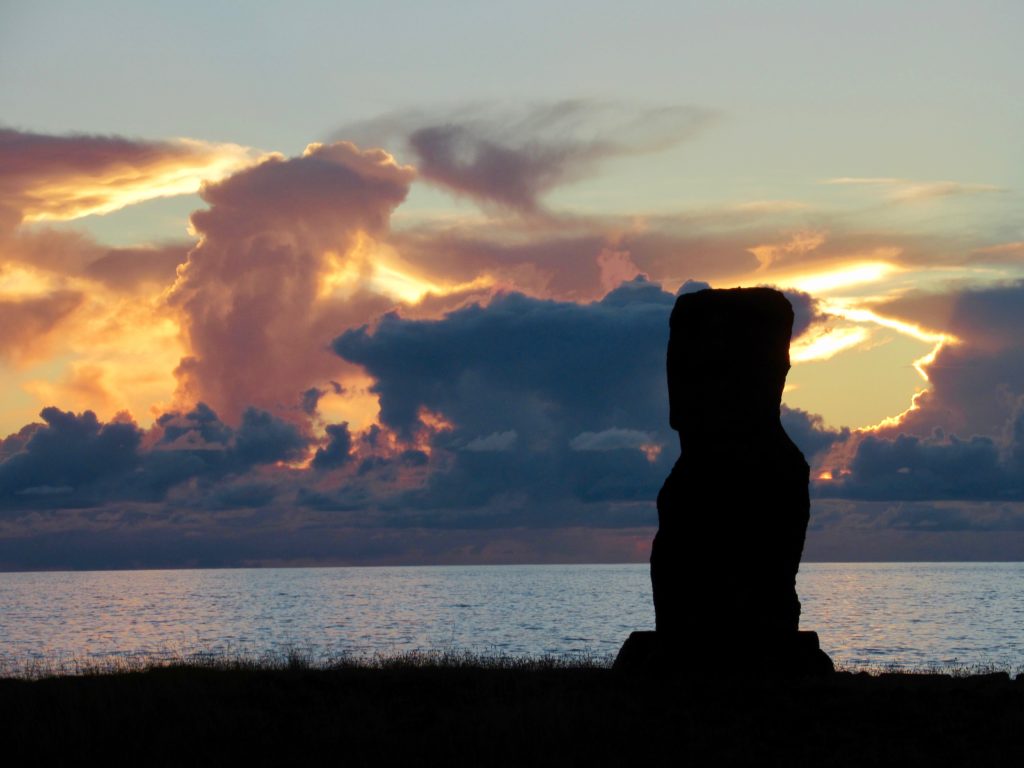
At first moai were relatively small, up to 6.5 feet (2 m) tall. A common misconception is that the moai are just heads of important villagers. In reality, the statues include full torsos. Moai faced inland, overlooking villages. Above all, moai are spirits with mythical powers.
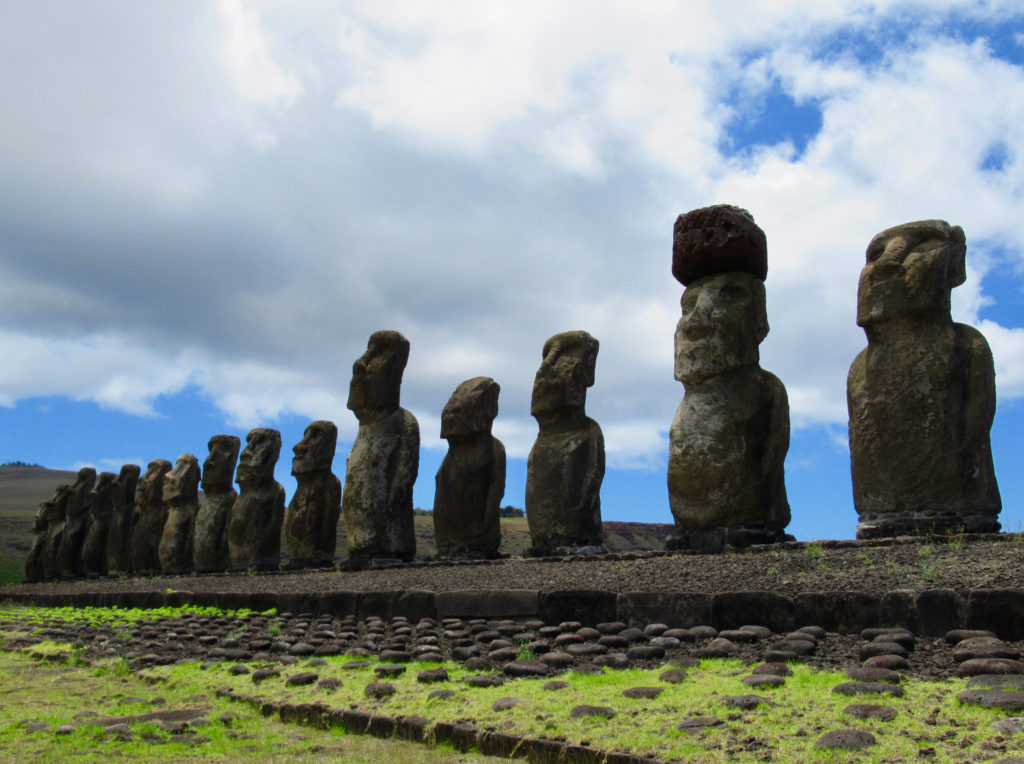
These massive monuments stood tall on rectangular rock platforms called ahus. Every village had an ahu and multiple moai. Over time, moai became larger and larger. By the time the Ahu Moai phase was over in the 17th century, these spirited sentinels reached close to 29 feet (9 m) tall.
Rano Raraku
The moai on Rapa Nui are created in one place – Rano Raraku. This prehistoric quarry was an important stop on our tour. We climb up grass-covered slopes. Heads poke out at various levels above the ground. It’s easy to see why this area was chosen.
The steep cliff above the statues is made of volcanic tuff. Tuff is compressed ash – a remnant of past eruptions. This soft rock is relatively easy to chip away using stone tools. It is surreal to see dozens of statues left in situ. It is as if, one day, the master carvers simply stopped working.
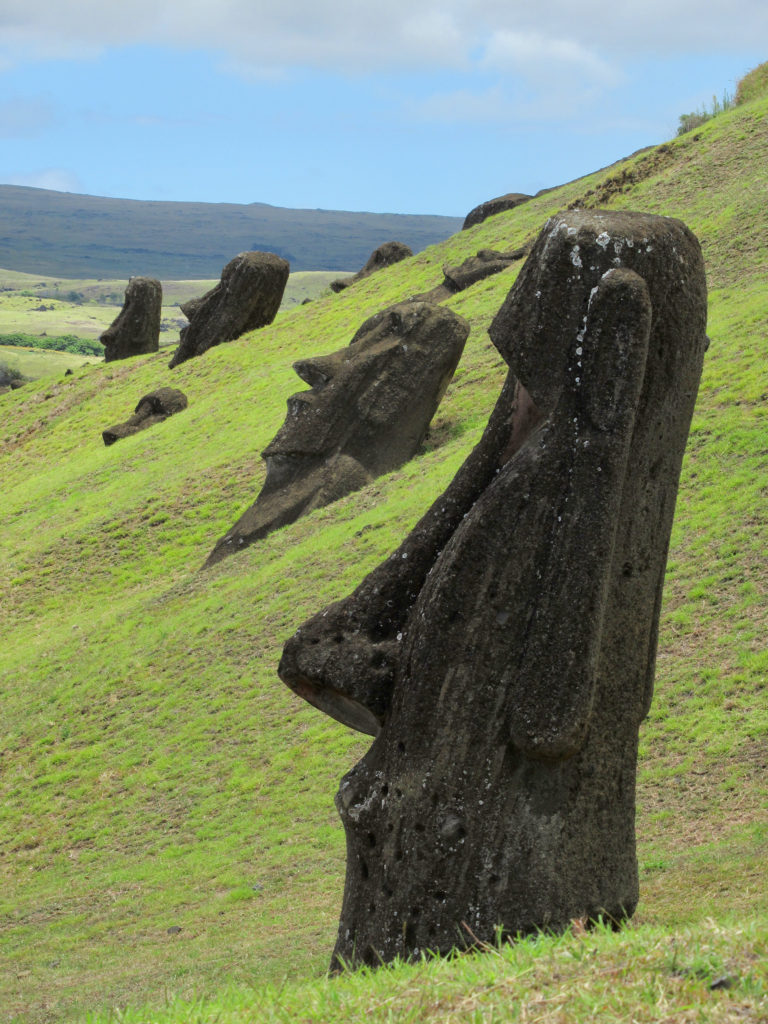
According to our guide, Rano Raraku is a sacred place. Master carvers and their apprentices were the only people allowed in the quarry. Villagers would come to the bottom of the cliff and arrange for a master carver to create an image of their leader. Food, household items and tools is bartered for the work and is delivered throughout the course of the year or more it would take to create the monument.
The Travelling Moai
Now this is where the myths come in to play. These stone statues weigh anywhere from 40 to upwards of 90 tons. Without a doubt, these are massive monuments. So, how did these stone sculptures travel from the quarry to the waiting ahu in their respective villages?
There is an odd statue at Ahu Tongariki welcoming visitors to the site. It stands alone facing the entrance. It is not sitting on a rock platform. Dubbed the travelling moai, this stone statue took a trip to Osaka, Japan in 1982. Back home on Rapa Nui, it became the focus of several experiments. Researchers used the statue to see how moai were moved from the stone quarry to ahus over 12 miles (20 km) away.
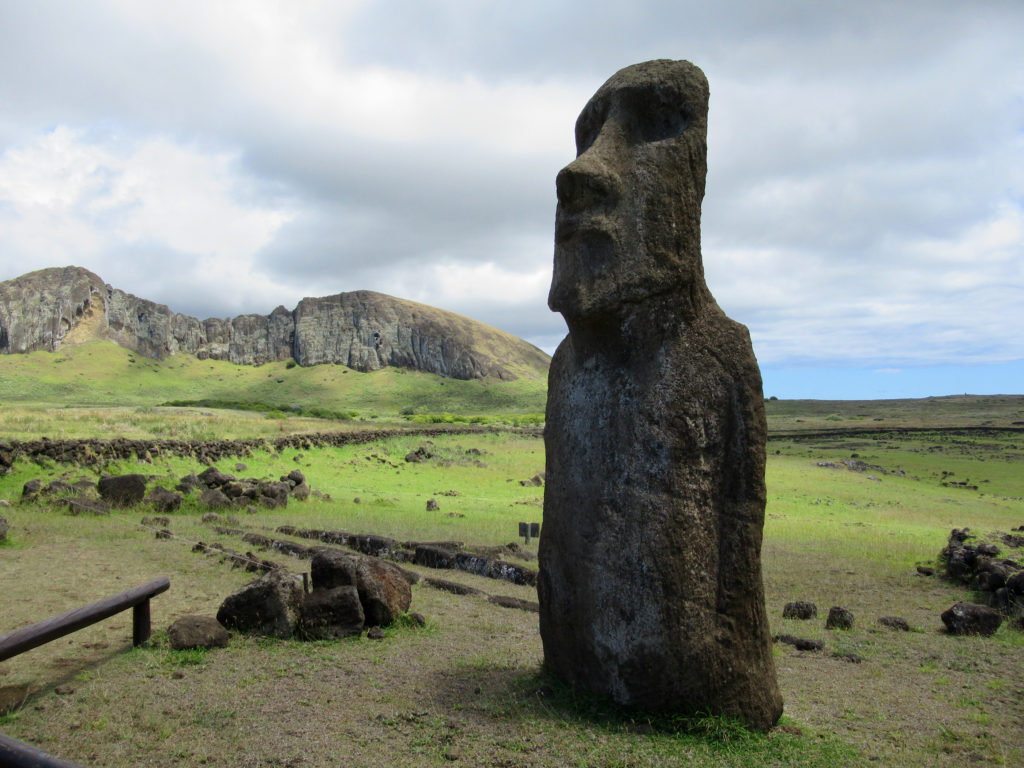
Walk the Walk, Talk the Talk
As a result, rub lines on the rock show wear from ropes wrapped around the statue. It was wrapped in ropes and pulled, first on one side and then the other, to help the rock “walk”. None of the other moai have these rope marks.
Local mythology says the statues “walked” at night by themselves. Dozens of moai lie in fields on ancient roadways. A fallen moai lost its power. There is no way to travel any further.
Czech engineer Pavel Pavel and Norwegian explorer Thor Heyerdahl tested various theories on how the ancient Rapa Nui transported these massive stone statues. None were definitive. One of the most likely theories suggests moai were laid flat on a platform. Rollers under the platform help it move along. A rock ramp and levers raise the moai upright on the ahu.
Topknots and Coral Eyes
Moai are carved at the quarry. After moving, finishing touches are added at their final destination. Carved eyeholes and white coral and red stone bring the moai to life.
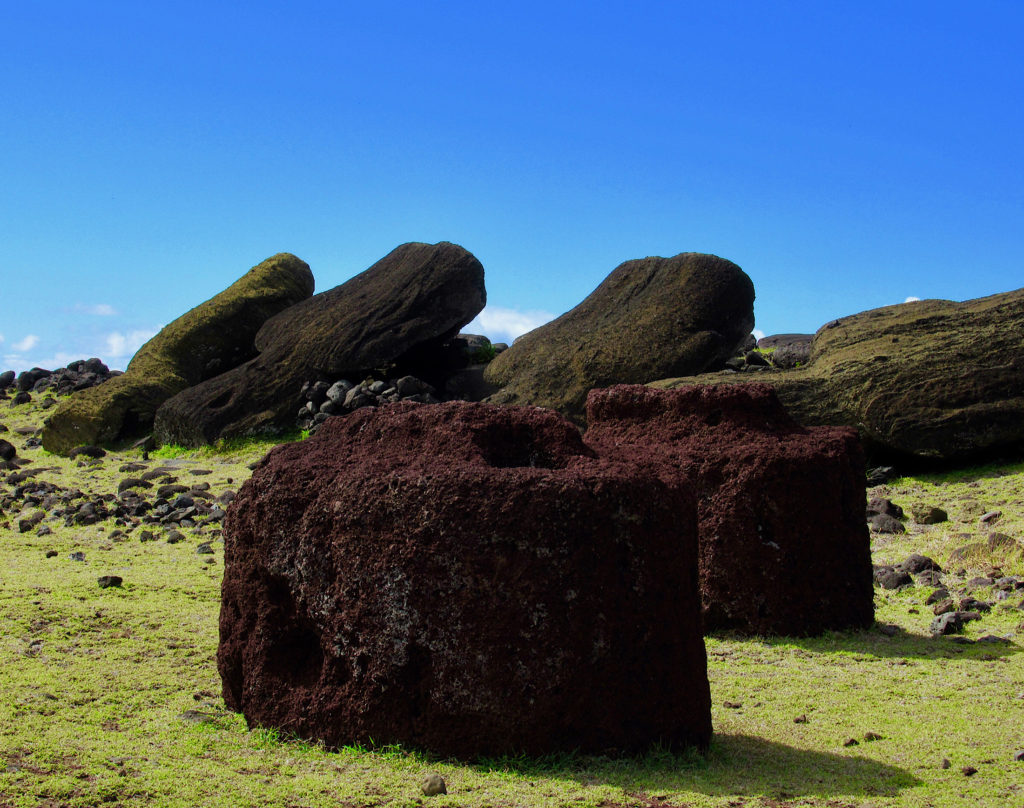
Pukao are red stone topknots. They come from a separate quarry at Puna Pau. These large, round stones sit on top of the moai. They represent the long hair of the chief. Moreover, they are a sign of power.
Troubled Times
Today we see the moai standing tall, 15 of them at Ahu Tongariki. It is the biggest and most impressive monument on Rapa Nui. What many people don’t know is these massive statues have not always stood in place.
During the Huri Moai phase, there was a lot of conflict between the different lineages. As a result, rival villages would sneak in at night and topple rivals moai. They made sure that the statues fell face forward. This took the power away.
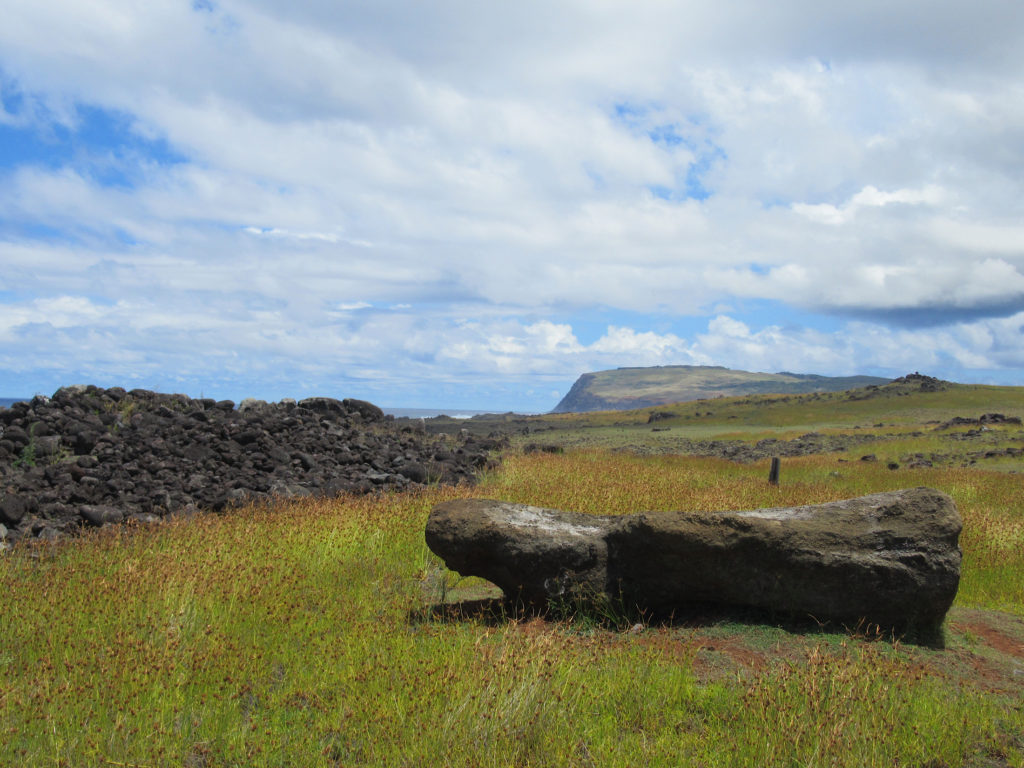
When the first European ship arrived in 1722, all of the statues were still standing. Explorer James Cook arrived in 1774. By this time, many of the moai were toppled over. By the end of the 19th century, not one statue remained upright. Some moai were carted away like holiday trinkets by explorers.
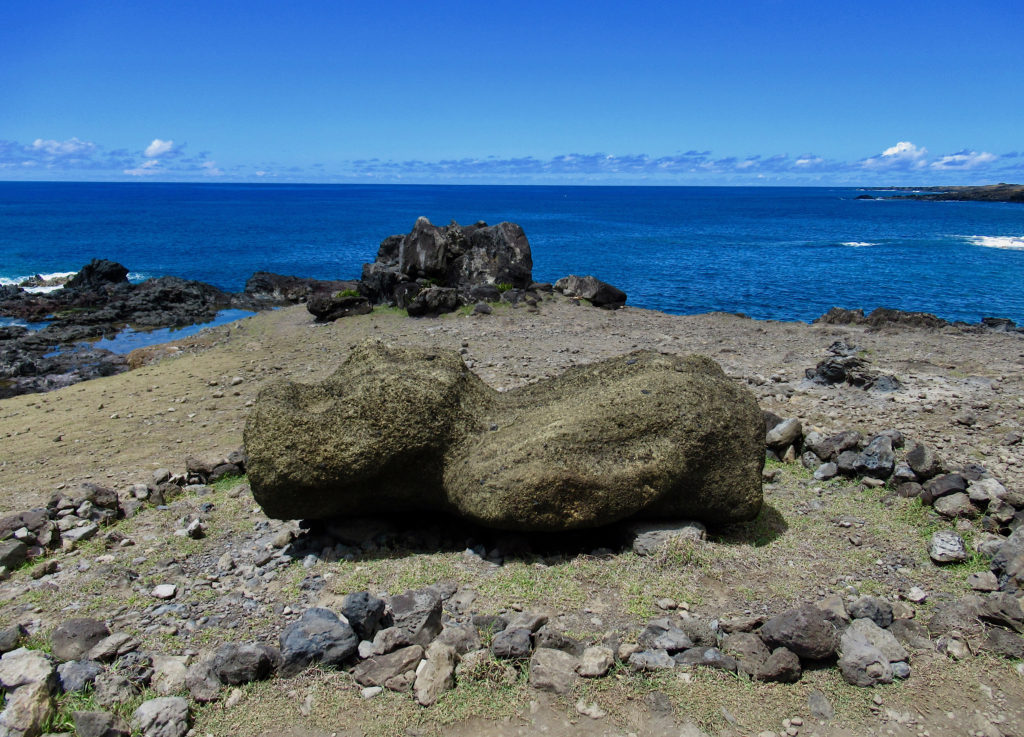
Rise of Tangata Manu
As the moai toppled, the Tangata Manu or “Birdman” cult gained impetus. High on the hill above Hanga Roa lies the remains of a ceremonial village called Orongo. Stone houses and petroglyphs are linked to the emblem of a man-bird.
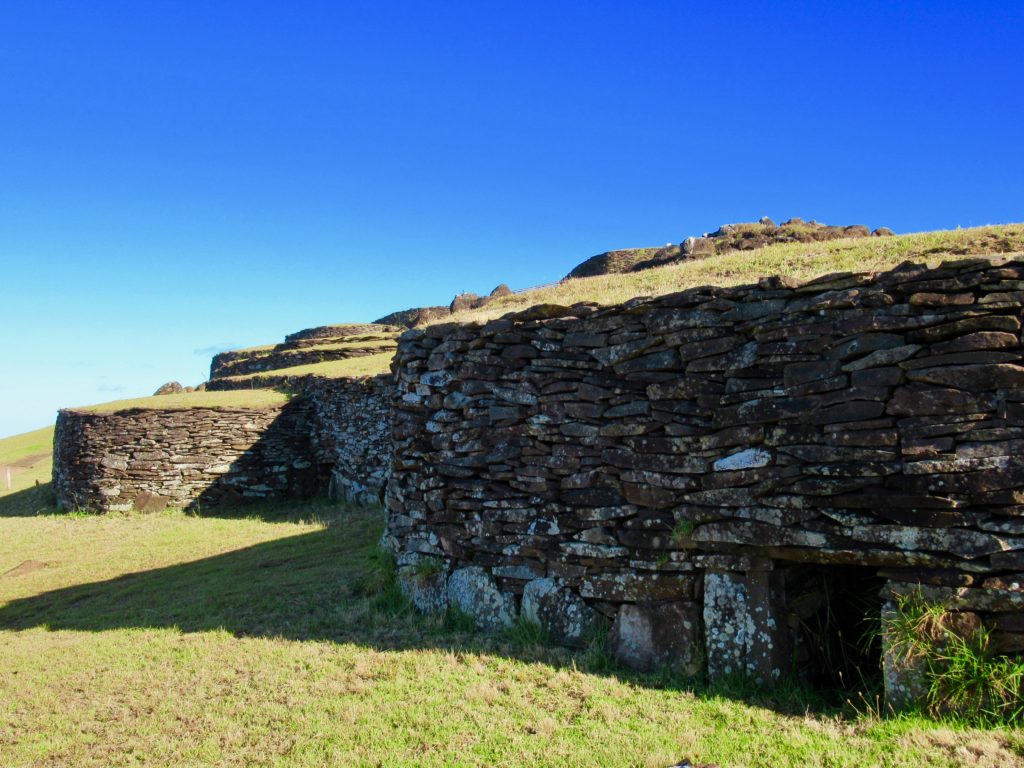
Once a year, warriors would climb down the sheer cliffs, swim out to a tiny offshore islet, gather the first sooty tern egg of the season, swim back and scale the rock back up to the summit. The winner became the high-ranking birdman for the year.
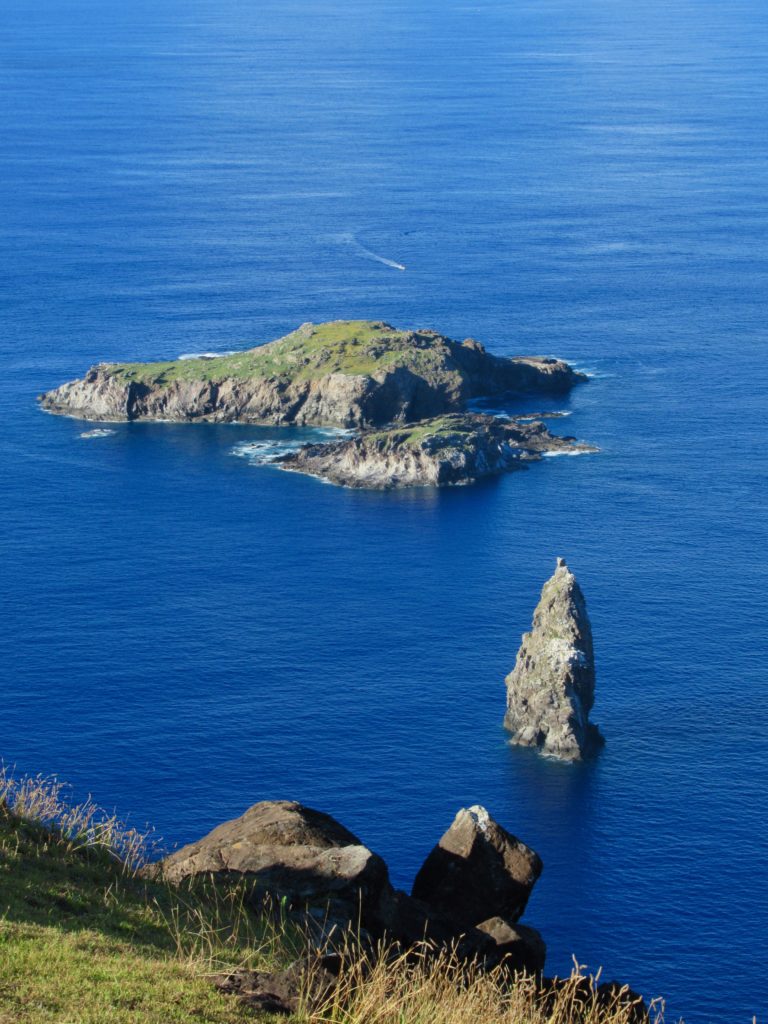
This new religious cult continued from the 17th century until the arrival of Catholic missionaries in 1864. Many new diseases, such as smallpox, devastated the native population. As a result of all the changes, the traditional culture began to fade away. The Chilean government claimed possession of Easter Island in 1888 and designated it a national park in 1935.
Bring the Past Back to Life
On May 22, 1960, a magnitude 9.5 earthquake rocked Chile. Certainly, it was the largest earthquake ever recorded. As a result, a tsunami arose. It hit Rapa Nui with such force that the moai at Ahu Tongariki were pushed off their platform and moved several hundred feet inland. Restoration didn’t begin until 1992. It took five years to complete the task. During this time, Rapa Nui National Park became a UNESCO World Heritage Site.
Standing in the predawn light, watching as the sun starts to climb in sky, you can’t help but feel the spirit of place. There has been a resurgence of Rapa Nui art and culture on the island. Native families are slowly taking back traditional homesteads. Cultural treasures removed from the island are gradually being repatriated from museums and collections around the world. The past is slowly coming back to life.
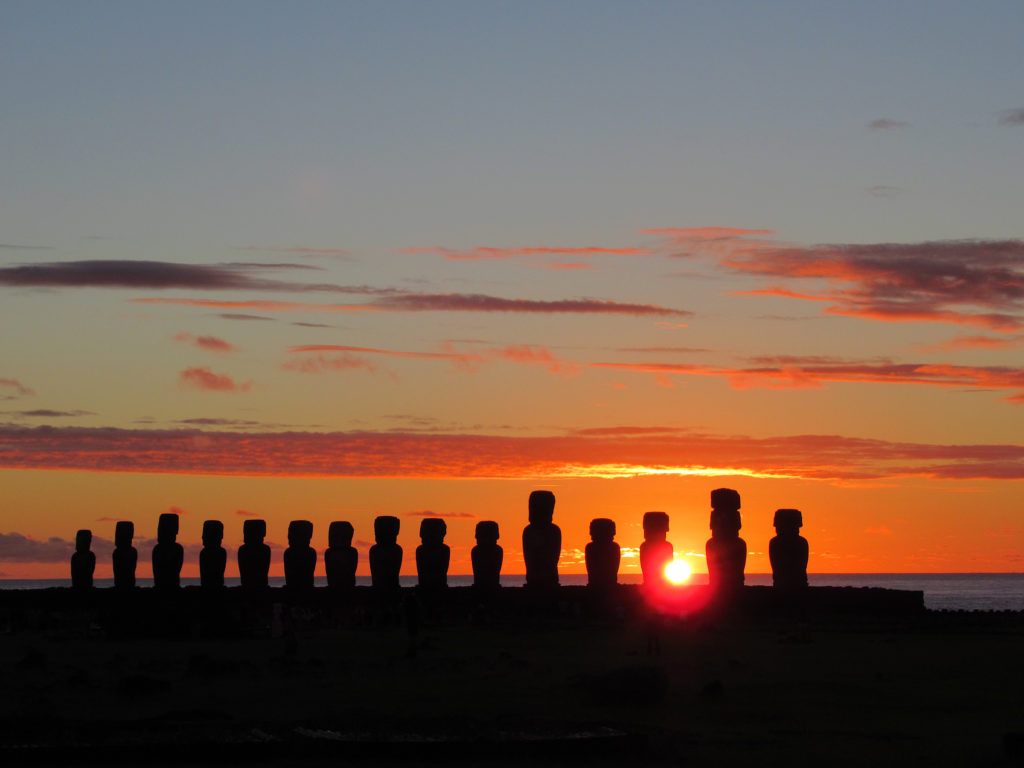
Having the opportunity to experience the wonder of Rapa Nui was a dream trip. Travel is temporarily but a dream. That being said, we are still inspired by the past and looking forward to the future.
Looking for more travel adventures in South America? Check out these posts:
- The Churches of Chiloé Tour
- Machu Picchu’s Story in Stone
- Gearing Up for the Galapagos Islands: Finally!
- All Aboard for Lizard Land in the Galapagos
- Tortoise Time in the Galapagos
Where do you dream of travelling to next?







Great read. I watched a documentary years ago on the island but it didnt include all the great mythology you have. And incredible pictures! Would be quite the experience to visit such a historic place
Thanks Stephanie! It is the mythology that gives Rapa Nui/Easter Island its sense of magic and mystery, IMHO.
I’d love to visit Easter Island! Great post!
Thx Shelby; I hope you make it there one day!
Fascinating read Megan, definitely a unique place to visit. I had no idea the history behind the stone heads.
Thanks Chris; I hope you get a chance to visit this mystical little dot in the Pacific Ocean one day!